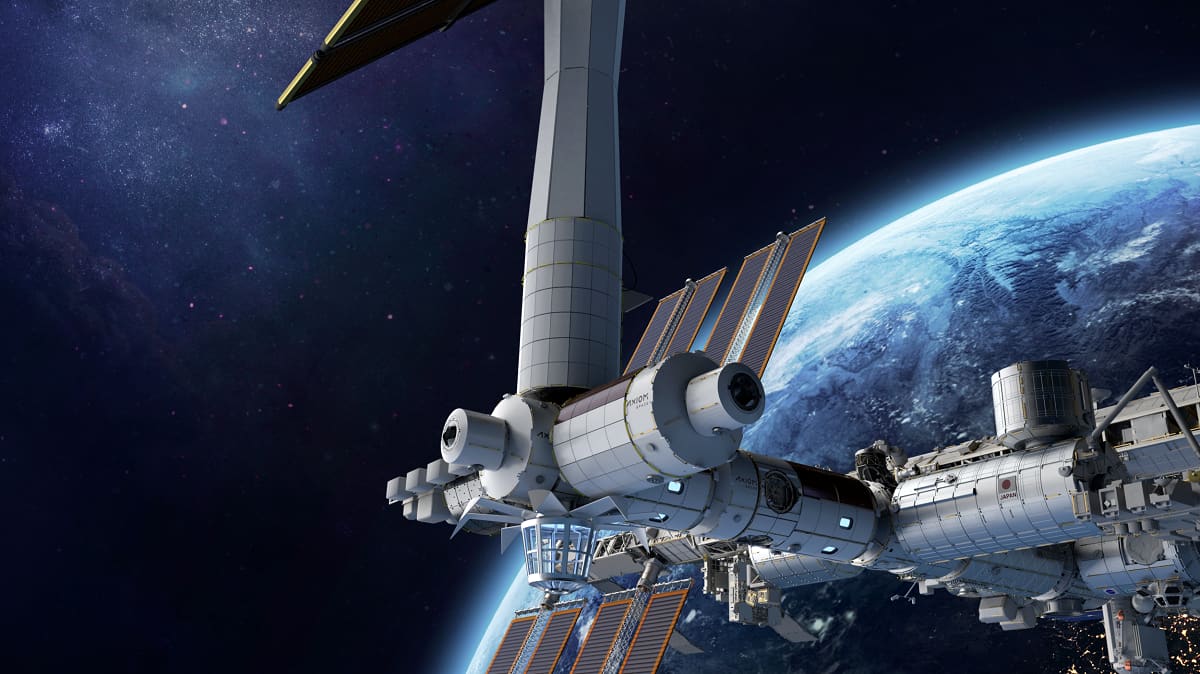The National Aeronautics and Space Administration plans to retire the International Space Station by the end of this decade, so the U.S. space agency is turning to private companies to build new space stations in orbit – and expects to save more than $1 billion annually as a result.
NASA earlier this year unveiled the Commercial LEO Destinations project, with plans to award up to $400 million in total contracts to as many as four companies to begin development on private space stations.
In response to NASA’s request, director of commercial spaceflight Phil McAlister told CNBC that the agency “received roughly about a dozen proposals” from a variety of companies for contracts under the project.
“We got an incredibly strong response from industry to our announcement for proposals for commercial, free fliers that go directly to orbit,” McAlister said. “I can’t remember the last time we got that many proposals [in response] to a [human spaceflight] contract announcement.”
The ISS is more than 20 years old and costs NASA about $4 billion a year to operate. The space station is approved to operate through the end of 2024, with a likely lifespan extension to the end of 2028. But, moving forward, McAlister says that NASA wants “to be just one of many users instead of the primary sponsor and infrastructure supporter” for stations in low Earth orbit.
“This strong industry response shows that our plan to retire the International Space Station in the latter part of this decade and transition to commercial space destinations is a viable, strong plan,” McAlister said.
“We are making tangible progress on developing commercial space destinations where people can work, play, and live,” McAlister added.
NASA is now evaluating the proposals, and McAlister said the agency hopes to announce the contract winners “before the end of the year,” although he is “pushing for earlier.” McAlister noted that the dozen or so proposals came from a “diverse group of companies,” ranging from start-ups to large aerospace corporations. When NASA hosted an industry briefing for company officials in March, interested parties included recognizable names like Elon Musk’s SpaceX, Jeff Bezos‘ Blue Origin, Airbus, Boeing, and Lockheed Martin.
In addition to cost savings, McAlister emphasized that NASA “will not need anything near as big and as capable” as the ISS moving forward. He said the private space stations “could be very large, but NASA will only be paying for the part that we need.”
“We need to right size our [low Earth orbit] infrastructure,” McAlister said.
The public-private model
Rather than build and own hardware itself, NASA has increasingly turned to public-private partnerships as a way to achieve its goals in space. The agency has had great success through this model in the past decade, with cargo and crew services provided via vehicles built by SpaceX and Northrop Grumman.
NASA last year estimated that the Commercial Crew program alone saved the agency between $20 billion and $30 billion, while funding development for two spacecraft, rather than just one. While Boeing has yet to complete development testing – suffering an extended setback after its first uncrewed Starliner capsule launch in December 2019 failed due to multiple anomalies – SpaceX’s Crew Dragon spacecraft has flown 10 astronauts to the ISS for NASA, as well as four private astronauts to orbit last week.
The agency does not expect to foot the entire bill for helping companies build new space stations, with McAlister saying “the strategy has to work for both the government and the private sector” from an investment perspective.
“You have to find that sweet spot in terms of sharing resources, sharing risks, sharing responsibilities, so that both parties can benefit,” McAlister said.
“It was explicitly part of the original announcement for proposals that we expected cost sharing,” he added. “Going forward, we do not anticipate paying for the entire commercial destinations. We don’t think that’s appropriate, as the companies are going to own the intellectual property and they’re going to be able to sell that capability to non-NASA customers.”
The Commercial Crew program serves as a guide for the Commercial LEO Destinations project, as initially NASA awarded five companies with Commercial Crew contracts before steadily narrowing down to two through later awards.
“When you’re this early, it makes a lot of sense to have competitors,” McAlister said.
NASA also perceives the strong interest from companies as a signal that the U.S. space industry “is technically and financially capable of building commercial space destinations,” McAlister said, which would decrease the agency’s “financial commitments” to science and research in orbit.
“Then we can use that savings – that we project to be on the order of a billion to a billion-and-a-half dollars [annually] – for our deep space missions and aspirations,” he said.
Working with Axiom already
NASA has already begun funding the ambitions of one company under a separate but related contract, having awarded Axiom Space with a $140 million to build modules that will connect to the ISS. When the ISS retires, Axiom plans to detach its modules and turn it into a free-flying space station.
Axiom has begun manufacturing on those modules, including the enormous windows that will make up an observation deck. The company plans to launch and connect the first habitable module to the ISS by 2024, under the assumption that Congress provides the necessary funding to extend the space station’s life to 2028.
“We need the ISS extension, because we are not going to be ready with these [independent] destinations by 2024,” McAlister said.
The House of Representatives’ Science, Space, and Technology committee is hosting a hearing on ISS extension on Tuesday, with expected testimony from NASA’s ISS director Robyn Gatens, NASA astronaut Kate Rubins, and Nanoracks CEO Jeff Manber.
Become a smarter investor with CNBC Pro.
Get stock picks, analyst calls, exclusive interviews and access to CNBC TV.
Sign up to start a free trial today.
